- News
- Reviews
- Bikes
- Components
- Bar tape & grips
- Bottom brackets
- Brake & gear cables
- Brake & STI levers
- Brake pads & spares
- Brakes
- Cassettes & freewheels
- Chains
- Chainsets & chainrings
- Derailleurs - front
- Derailleurs - rear
- Forks
- Gear levers & shifters
- Groupsets
- Handlebars & extensions
- Headsets
- Hubs
- Inner tubes
- Pedals
- Quick releases & skewers
- Saddles
- Seatposts
- Stems
- Wheels
- Tyres
- Tubeless valves
- Accessories
- Accessories - misc
- Computer mounts
- Bags
- Bar ends
- Bike bags & cases
- Bottle cages
- Bottles
- Cameras
- Car racks
- Child seats
- Computers
- Glasses
- GPS units
- Helmets
- Lights - front
- Lights - rear
- Lights - sets
- Locks
- Mirrors
- Mudguards
- Racks
- Pumps & CO2 inflators
- Puncture kits
- Reflectives
- Smart watches
- Stands and racks
- Trailers
- Clothing
- Health, fitness and nutrition
- Tools and workshop
- Miscellaneous
- Buyers Guides
- Features
- Forum
- Recommends
- Podcast
 2021 BMC Teammachine SLR Two - riding 5.jpg
2021 BMC Teammachine SLR Two - riding 5.jpgHow to maximise your fitness when you get to 40+
As you get older, there are ways to adapt your riding so that you can make the most of your in-the-saddle time for getting fit and going fast. Everyone is different; your experience and fitness background will dictate what you are capable of as you get older, and as always, we all respond differently to training, but understanding the changes that happen to our bodies as we age can guide a better approach for making the most of your riding, and enjoying it too.
> Discovering cycling in your 40s - how to unlock talents you never knew you had
Some of this advice will help you optimise the physical adaptations from each bike ride, while other bits are important for avoiding injury so you can still ride your bike as and when you like.
For this expert advice, we spoke to ABCC Level 3 accredited coach Simon Beldon of Matt Bottrill Performance Coaching and Chartered Physiotherapist Nichola Roberts of Velophysio.
You tend to turn into more of an endurance rider as you get older, better suited to longer distances at a lower intensity. This means that intense sessions are even more important to pack in. Strength training and a protein focus can help delay muscle wastage, while conditioning, flexibility and bike fits become more important so you can continue having fun on the bike.
For more on this, continue reading…
Focus on anaerobic and VO2 work
“Everyone is different so will need a different approach depending on their background and current situation,” Simon of Matt Bottrill Performance Coaching cautions.
“But usually you find with older athletes that if they’ve got history in the sport, with a good endurance in place already, it’s their anaerobic capacity and VO2 max that’s missing.
“Your very top end is one of the first things you lose as you get older.”
Sprinting is your anaerobic capacity and includes efforts somewhere between 30 seconds and two minutes, Simon notes, while VO2 efforts are anywhere from about two minutes to about eight minutes.
As these areas of your fitness are in decline, it’s worth devoting more training time to shorter, harder efforts.
> How to get the most from your limited training time
One good way of achieving this is to have a polarised training plan, with roughly 70-80% of the workouts at low intensity (easy) while the remaining 20-30% of sessions are completed at a high intensity (hard). This essentially skips out the middle zones and allows you to focus on giving it your all on the hard days.
Out on the road, Simon recommends doing max efforts on hills. “Plan a route with some hills and do an effort as hard as you can, recover, then do it again on the next hill, and repeat.”
> 12 of the best indoor cycling apps - get the right turbo training experience for you
More specific workouts for targeting these two areas indoors can be found on online training platforms such as Zwift and the Sufferfest.
> 12 of the best smart home trainers for 2021 — get fit indoors
While you can adjust your training to help maintain your all-round fitness including your tippy-top end, if you are looking to target an event, choose longer endurance ones for your best chance of success – generally speaking, of course.
“There’s not so much of a drop off in endurance performance," says Simon. "Older riders are able to maintain and hold onto their fitness for longer events.”
Don’t neglect rest
Recovery is as important as it’s always been, so don’t go crazy with all the ultra-hard anaerobic- and VO2- focused workouts all of the time.
Check out our full guide on how to maximise your recovery here with pointers on refuelling, rehydrating, what it means to go on an actual recovery ride, along with a look at the effectiveness of compression garments, as well as bicarb and cherry supplements.
How much recovery time you require depends on the fitness level as well as the broader lifestyle of the individual, Simon notes.
> How to make the most of riding solo: get maximum benefits from training alone
As well as recovering from time on the bike, if you have a stressful and busy life Simon says you need to be conscious about everything you’re doing day to day to make sure that you are getting the rest that’s needed, so you can perform when it’s riding time.
“All our stress adds to the body and can have an impact on training,” Simon says.
An essential part of the recovery process for physical and mental health is getting adequate amounts of sleep, both in quality and quantity, and this is an area that’s often underestimated, Simon warns.
“As we get older, we seem to get less sleep. With so many things going on in our lives, older riders tend to get up early to do training or neglect their sleep pattern.
“But sleep is one of the things that can really enhance performance, so as an athlete you need to make sure you’re getting at least seven hours of sleep per night.”
Simon recommends having a look at your sleeping habits, to make sure that everything is in place so you can make the best of your riding and the time you have available.
As part of our recovery guide, we have included a section on steps for ensuring good sleep hygiene, as explained by University of Loughborough PhD Sleep Psychology researcher Rui Pereira. Creating routines, avoiding electronic devices leading up to going to bed, as well as getting decent exposure to natural light as you wake, can all help.
Studies also point to avoiding training early in the morning or late at night to allow for sufficient sleep and recovery opportunities
Also, in our feature exploring the most effective time of day for training, chronobiologist Professor Ben J. Edwards of Liverpool John Moores University says that in terms of muscular performance humans are stronger between 5pm and 8pm.
> 11 top tips for training in the dark: make the most of your winter off-season
But alongside this Ben advises that it’s more important to complete your session at least three to four hours before you want to get some sleep, to avoid the endorphin rush and adrenaline that can make it difficult to fall asleep, and causes sleep deprivation.
Protein becomes key
Although generally it can be harder keeping the weight off as you get older, Simon stresses it’s still essential that you get enough carbs if you’re training regularly so that you can recover and replace the glycogen that you’re losing when you’re exercising.
Alongside this, protein becomes a more important part of your fuelling strategy, says Simon.
> Reviews of energy and recovery drinks can be found here
As a result of muscle loss as you get older, it’s crucial to get about 0.5 grams per kilo of body weight of protein, about four to five times a day.
“This can help maintain your muscle which you can lose if you’re not careful.”
Off-the-bike work is crucial
“Strength training and conditioning really helps you continue riding,” says Chartered Physiotherapist Nichola Roberts. “It’s easier to neglect as you get older but it’s actually the most important time to be doing it.
“You simply can’t replace strength training with doing more cycling, you need to be doing it off the bike and in the gym.”
For women, this is crucial as soon as they hit menopause, Nichola explains. For men, it’s more into their 50s and 60s.
“As you get older you start to lose bone density and muscle strength,” explains Nichola. “As you lose muscle strength it means that your postural muscles are not necessarily working as well.
“It’s really important to build muscle strength off the bike to prevent those postural changes happening on the bike.”
Doing this strength training and some impact work off the bike also helps prevent loss of bone density, Nichola adds.
“At a base level, walking and running do some good, and even activities like tennis and dancing–just anything where you’re actually putting impact through the body in some way," says Nichola.
“But doing loaded strength training is best. By that, I mean weight training in a gym. The muscle pulls on the bone and it encourages osteoblast activity which creates more bone density.”
> Cycling can make your bones brittle; here's how to stop it
This should be done three times a week, with the focus on strength with loads.
Simon recommends starting with core exercises and then as you get stronger moving onto more specific weighted lifts such as squats and deadlifts.
“It’s important to up the weight, so doing max rep efforts, rather than increasing the number of reps,” says Nichola.
For the postural side of it, Nichola adds that other activities such as pilates and bodyweight exercises are definitely beneficial. But for making changes to your muscles and your bones, heavier weights are needed.
Joint and bone supplements can also be beneficial for staying strong and flexible for longer. Phd Nutrition has its Life - Move offering (in powder and capsule form) that’s designed to support your bone and connective tissue strength for maintaining mobility and reducing the chance of injury.
It packs in a combination of hydrolysed collagen with Vitamin C for collagen formation as well as glucosamine and chondroitin with turmeric and BioPerine to help reduce inflammation in the joints. The formula also includes Vitamin D, K and Calcium for bone and muscle support.
Check up on your riding position regularly
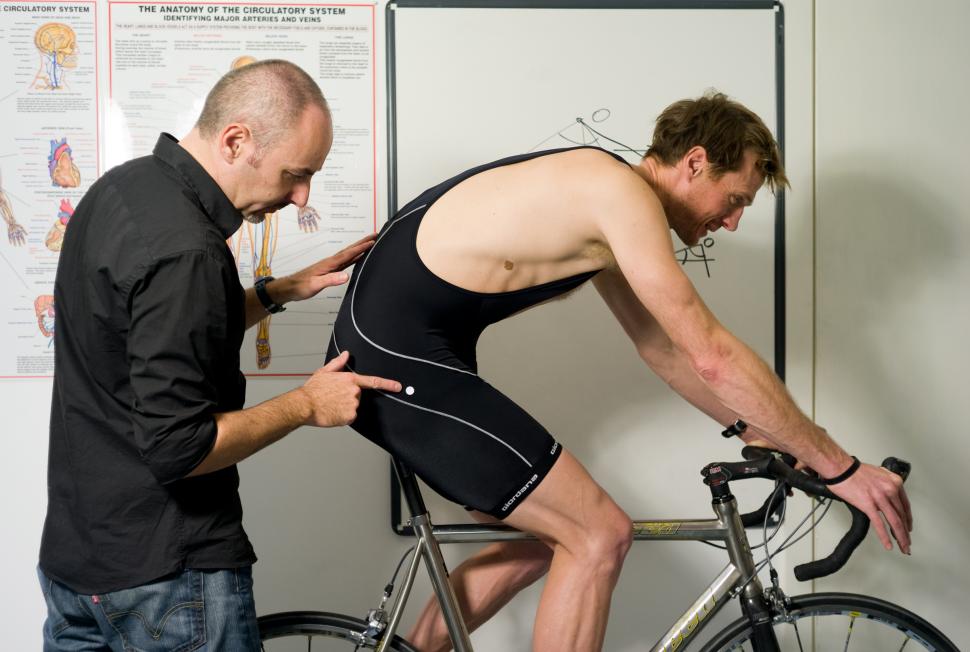
Your ligaments and joints start to decondition past the age of 30, Nichola explains.
“It’s important to do things to protect them. You’re more likely to have a back problem that lasts for longer, and the same for knees.”
> How to make your bike more comfortable - check out our 14 tips
Getting bike fits and checking up on your riding position on the bike regularly is sensible because as we age our posture alters.
“If you had a bike fit several years ago, it’s probably worth having another one as your flexibility can change.
“Having a bike fit makes sure you’re comfortable and that you’re not putting anything under stress.”
> Should you get a bike fit? The 9 pitfalls to avoid
Don’t be afraid to make changes that differ from what was optimal when you were younger.
“If you used to race in a completely aggressive and slammed position, you may want to be slacker and sitting back a little bit,” Nichola says.
Increase your cadence and use easier gears

Paying attention to your gear selection and cadence is very important as you get older. Keeping your cadence high helps reduce the risk of injury.
> Cycling cadence: how fast should you pedal?
“Cycling is relatively good for knees generally, in terms of the knee joint itself,” Nichola notes. “However if you are cycling constantly on erg mode on a smart trainer and you’re riding up mountains on platforms such as Zwift, you’re doing low geared, low cadence efforts—these can be really negative for your joints and can cause knee problems.
“It’s really important that the gearing is easy for what you’re doing and to avoid erg mode on low cadence efforts,” Nichola emphasises.
Riding indoors on a smart trainer it’s easier to slip into putting too much strain through your knees.
Nichola explains: “When you’re outside on your bike, you just move your body a lot more. You might get out of the saddle, you just adapt to what your body needs. Whereas on erg mode riders just tend to push through it—it’s not very natural.”
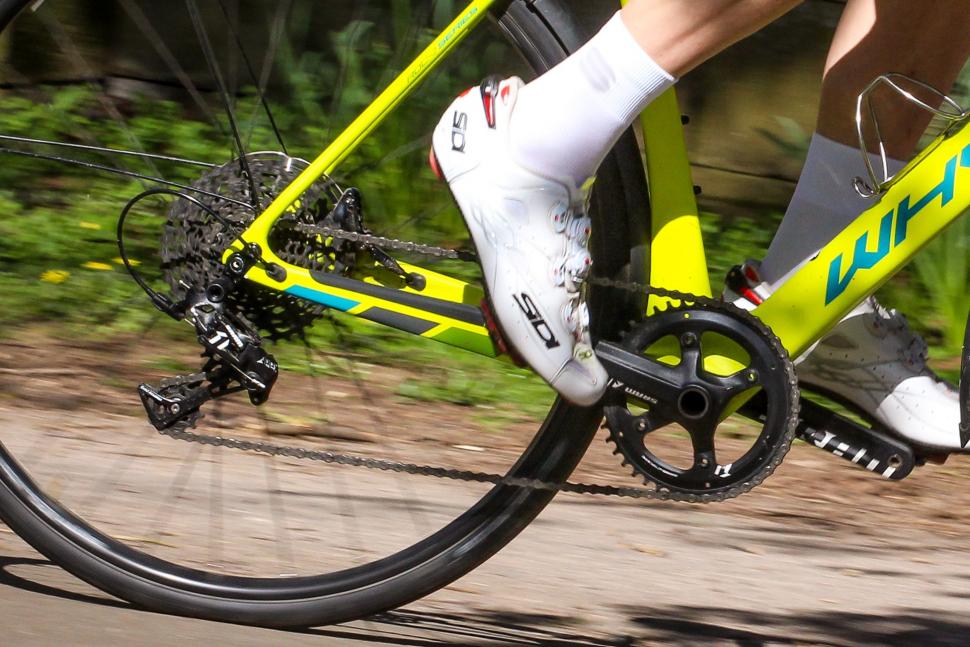
While problems are more likely to be caused by grinding it on erg mode inside, it’s also a sensible idea to change your cassette to one with larger sprockets to get some easier gears for spinning up steep slopes outside.
Work on your flexibility
Focusing on flexibility, particularly spinal flexibility, is really important, especially if you have a job that involves sitting at a desk all day.
As you age you become stiffer and gradually your range of movement decreases.
“You really want to do more flexibility exercises as you get older to try to maintain the ability to bend over comfortably in the riding position, rather than seizing up—the more you can do, you can sort of interrupt the process,” says Nichola.
Following yoga practices or doing any exercises where you’re moving into extension are beneficial, says Nichola.
“One exercise is lying on a foam roller with it lengthwise down your spine, in a crucifix position with your arms are out wide so you are stretching through your chest.”
Then there’s thread the needle. Nichola explains: “Go down so you’re on all fours, on your hands and knees. Then pass one arm between the opposite elbow and knee, so you get a twist through the spine.
Roll outs on a foam roller are another go-to exercise.
“You’re on your hands and knees. Then you push the foam roller away, so you’re extending through the upper back,” Nichola says.
There are some advantages to ageing too…
While there are ways to adapt your training to defy the ageing process, you can also expect to see benefits in getting older.
Experience counts for a lot, and this can help you across lots of areas, including with technical skills, judging the right volume to recovery ratio, and how best to fuel your body.
“As I’ve gotten older, I’ve become wiser to what I can and can’t eat alongside my training.” Simon says: “I find it easier to maintain my weight than when I was younger—you know your body.”
As well as better gauging the nutrition side of things, you may find it’s easier to understand when you’re feeling fatigued and confident enough to react accordingly by taking an unscheduled recovery/rest day.
Simon says: “I find that older riders are more inclined to say when they’re tired and will be a bit more flexible in their approach to training, so they’re not blindly following a programme or running themselves into the ground.
“They’ll step back and won’t be afraid to challenge and say, you know, I’m tired today, I’m not doing that.”
> Are you a Zwift addict? The gamification of indoor cycling platforms
By listening to your body and taking this considered approach, each ride is beneficial and you’re less likely to slip into overtraining.
Anna has been hooked on bikes ever since her youthful beginnings at Hillingdon Cycle Circuit. As an avid road and track racer, she reached the heady heights of a ProCyclingStats profile before leaving for university. Having now completed an MA in Multimedia Journalism, she’s hoping to add some (more successful) results. Although her greatest wish is for the broader acceptance of wearing funky cycling socks over the top of leg warmers.
Latest Comments
- Rendel Harris 5 min 23 sec ago
I know from a message from him this morning that he's been reading this thread so if you're watching mate…...
- Andrewbanshee 17 min 2 sec ago
900% hike in insurance. Utterly pointless insurance then.
- wtjs 21 min 8 sec ago
The coroner concluded that the collision occurred when Lucas "suddenly, and without warning, veered to the right" ...
- Gravel1-2 29 min 1 sec ago
Had mine stolen from the work car park overnight. They cut their way in and took what bikes they could stuff in a van including mine....
- brooksby 56 min 47 sec ago
Ah, alcohol: the solution to - and the cause of - many of the world's problems.
- Iwein Dekoninck 1 hour 46 min ago
I don't have an older / longer Rapha jersey to compare to, but I thought the length was spot on, certainly not short like some of the aero jerseys.
- Dnnnnnn 2 hours 34 min ago
"With the six-month review of the scheme now approaching"... LOL. The scheme they prevented implementation of for almost six months....
- Rendel Harris 2 hours 47 min ago
Especially as apparently his Di2 managed to mistake the shaking from the cobbles of the Arenberg as a crash and went into crash mode, locking him...
- wtjs 2 hours 49 min ago
APPGs (not just this one) are pretty low down the influence ladder...
- Gus T 3 hours 28 min ago
Don't forget that the Tariffs will still apply to the imported raw materials and parts so are of no benefit to the US consumer. Americas burns...
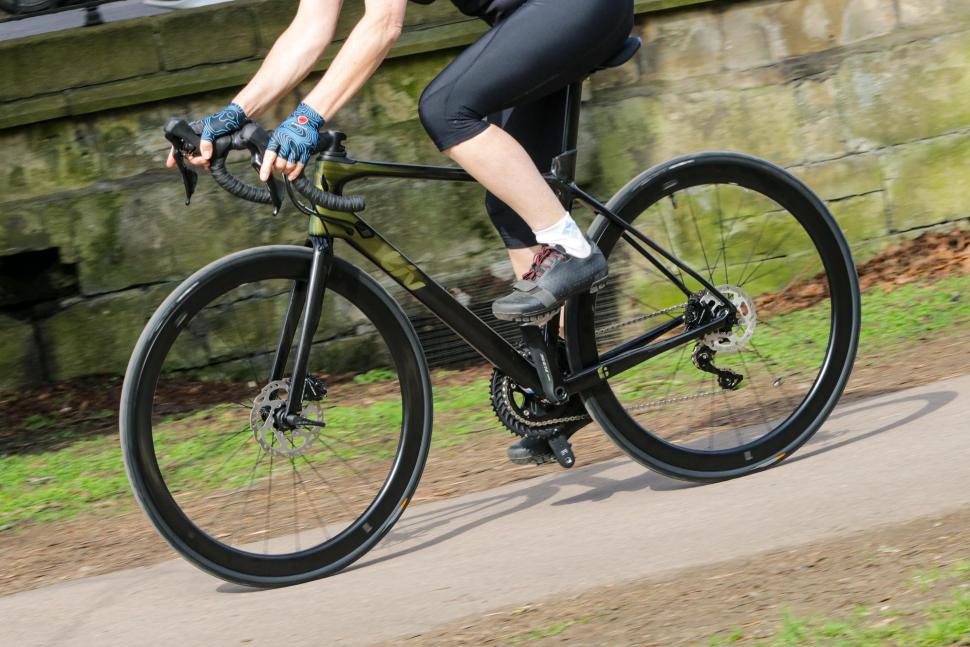
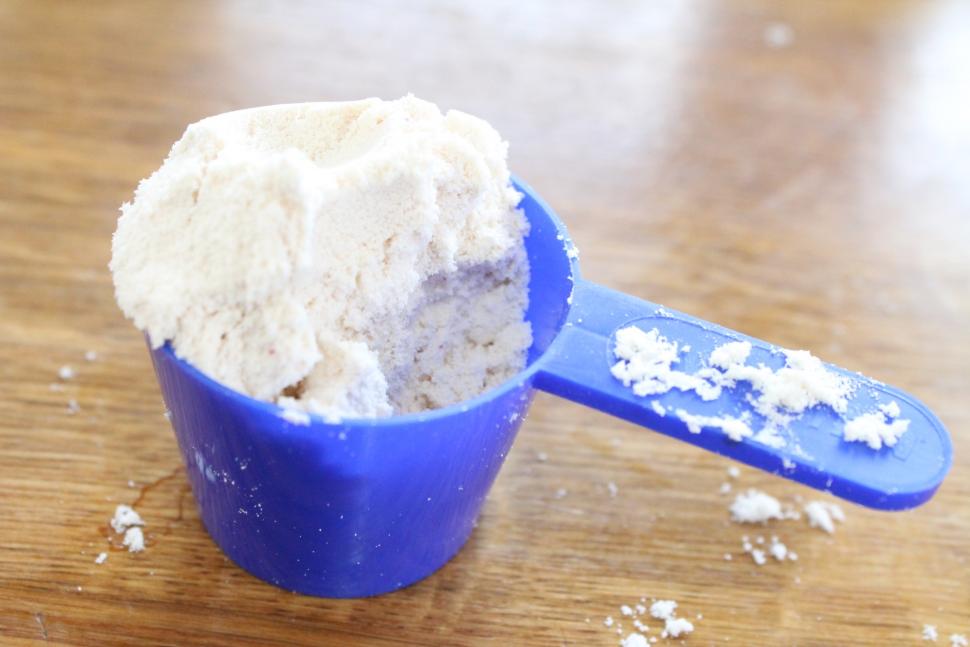
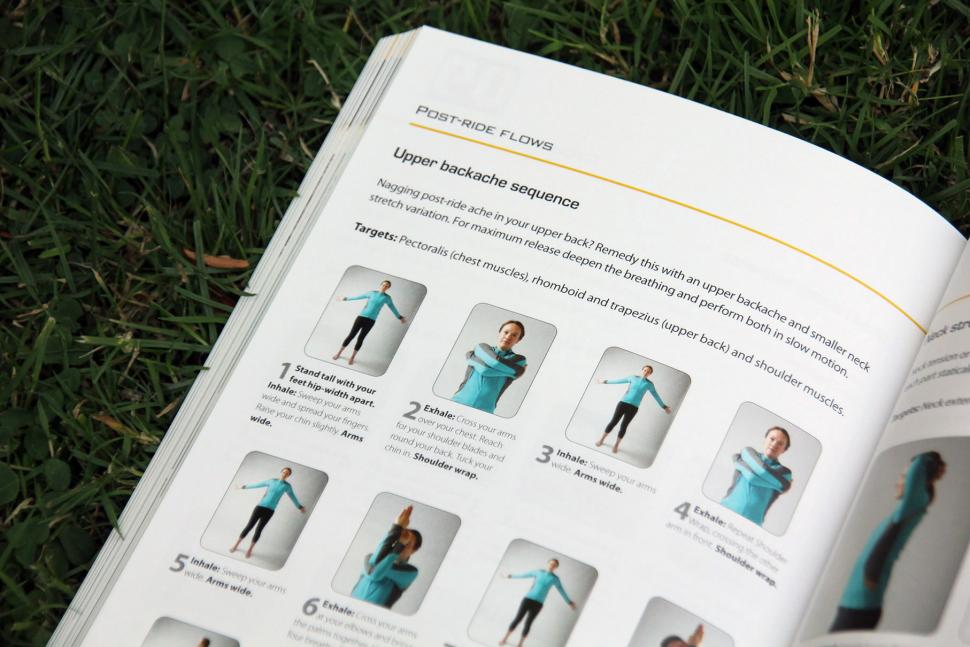
Add new comment
35 comments
I'm 62...no meds, not diabetic, 60 resting rate, bit too overweight but always have been all my life...... road bike and gravel bike ride and Bike Mechanic as a profession...... and my top tip is to Ride...not chase the numbers or the clock, have cycle buddies who are of a similar mindset and get out there.... I "Gravel" bike on local green lanes and tracks when time is short but the workout is as good as loads of road miles... to be honest we all prefer to get wet and muddy in the darker months on trails and green lanes than sitting in a garage etc churning a turbo trainer over.... we all are late fifties to me... in age group and all as fit as we've ever been.... It's not a race...just ride..
This is pretty much spot on. If you're not competing in some sort of masters type events, there's no point in getting bent out of shape about stuff that only really matters to people who are. Ride your bike, vary the terrain, make sure your bike fits you, and your kit does too. Then just get out and ride. It might be nice to see actual numbers, but it's really not necessary for most.
What if the thing you like is chasing numbers though, this is like telling a weight lifter it doesn't matter what you push
If number chasing is your thing, that's fine, too many people get all hot under the Lycra about numbers that aren't really that important for most non competitive cyclists though. I hear it a lot on stops, when I'm out and about "my FTP is blah blah blah" followed by "well my LTHR is blah blah blah" followed by "well I held blah Watts NP for blah blah minutes the other day" I think, cool story bro, I'm pleased for you. It's not my thing though, I just ride about and go and see stuff and things, I'm not really overly concerned with the numbers.
They're probably thinking the same about you peel off to your socks and sandles sustrans route with a thermos of tea in the bottle cage. Who are you to judge other people conversations at your stops and claim your way of cycling is "better" than theirs?
My top-tip - Make sure you are generally a bit unfit during your 20's and 30's then you might actually get fitter when in your 40's than when you were younger! Worked for me!
Me too! I didn't plan it that way, though.
I am 55 and bought my first road bike when I was about 40 when I got too fat to jog, and hurt my back swimming. Since I had hurt my back swimming, and had some sciatic pain, and because as a jogger rather than a cyclist I had strong quads (thigh muscles) but weak glutes (bum muscles), I set my road bike seat forward in a time trial / triathlon type forward offset position and used my quads (thigh muscles) only.
15 years later my legs literally started to fall off, due to hip instability, caused by my "glute amnesia," especially on the side of my sciatic pain, due to my glutes withering away, while pushing and mashing with my quads.
Even if your back hurts a bit, sciatic pain is a phantom pain that does not cause any damage.
It is important to excercise your glutes, which is easy to do in a traditional, rearward offset saddle position, pulling your pedals past the bottom of the stroke. Now with my seat offset backwards, and after a few thousand glute excercises, I am as fast as, or faster than I was when I was using my time trial position.
And as a further plus, if you use a rearward saddle offset, and pull through the bottom the stroke, not mash, they you save your knees from damage too.
Hey thanks for taking the time and effort to explain this - it's really useful infomation especially pulling the pedals and how that relates to glutes.
A note of caution: the scraping motion you describe can irritate some people's hamstrings. I am now dogged with intermittent high hamstring tendonitis after a summer working on exactly what you describe, and the physio I'm working with noted that this is quite common.
I'm 58 and only started cycling seriously in my early 40's and in the last few years I've set personal bests at all TT distances from 10 miles through to 100 miles. In 2018 I finished 3rd in the Scottish BAR and in the same year the Scottish Vets BAR (It is handicapped by age) was won by a 83 year old, awesome achievement on his part. Never use age as an excuse!
What about discovering cycling in your 40's? Not managing a decline from a youthful peak but discovering and developing a prowess you never had.
I don't want to be better than even an amateur racer. I want to be better than 30 year old me until I'm too old to remember what 30 yrs me was like.
Same. I re-started cycling in 2013, and I turn 50 next month. Between cycling 5000-6000 miles a year, strength training, and even some stretching, I'm absolutely in the best shape of my life right now. I'm not on any sort of cycling training plan, I just cycle nearly every day, year round, probably mostly "junk miles." I probably don't get nearly enough recovery, but still I can see in Strava that I am getting faster--by maybe 0.3 MPH average per year.
My blood pressure measures low, my resting heart rate is typically 50-55, and all my blood chemistry is great despite my great fondness for craft beer. I take no medications for anything except a daily antihistamine.
Also, my dad was diabetic years earlier than my current age, so I've avoided that so far too.
Although you may take an antihistamine for other reasons, do weigh up the benefits of histamine response in the human body, including musle recovery, insulin sensitivity and blood vessel health:
https://www.the-scientist.com/news-opinion/regular-hiit-exercise-enhance...
Interesting, thanks. I'd not come across this and figured they were pretty safe. I could probably cut back to half the year, maybe to half a dose even. It's hit and miss which days here trigger my allergies, but they're really annoying when they hit, and it takes a while for a pill to take effect if I try just taking as needed.
I've been suffering allergies for last 2 decades. Tried variations of anti-histamine and allergy shots. At the end of the day, it's a chemical compound that weakens your immune system. When I started riding and weight training, I stopped taking all this crap. My body was fighting for several seasons. I was miserable, yet refused to take anything. Sooner than later, my allergy was gone! I have a reason to believe that it's due to vigorous training on the bike and at the gym. My immune system is at another level now. I rely on the same approach when I get sick. No pills! I let my immune system fight it.
eBike?
Does it make more sense to buy an eBike when you're 40, 50, to save your knees/legs for later life. Or to buy one when you're 60, 70 and beyond, when you're knees/legs are weakened?
The question is based on people that started riding again, in their 40's and 50's.
I re-started cycling at age 42. Currently doing 5000-6000 miles a year and I turn 50 next month. My knees are doing great, and I'm nowhere close to considering an eBike.
Mind, I weigh 160 lb (11½ st, 72.5 kg) which is close to the most I've ever weighed, so my knees have had a pretty easy life. I also do lots of walking, and judo. I'm mostly a spinner if I'm cycling hard. I don't use clipless pedals.
It is never ok to buy an e-bike.
Most people do not need them
The ones that need an e-bike .. most of them cant steer well enough to handle the weight of an e-bike.
I think e-bikes are for people who have reumatism ea..
"It is never ok to buy an e-bike."
Any other diktats you have to offer ?
(No need for a bike full stop. People can walk or run)
It is never ok to buy an e-bike
Even I don't agree with that- people are welcome to buy them, but what they do on them generally isn't cycling. In the words of a proponent on here: 'e-bikes iron out the hills'. That's all you need to know!
Why do you care???
It is never ok to buy an e-bike.
If it gets people out on two wheels, then I'm all for it. You never know, some of them might decide to also take up cycling.
Didn't know being over 40 was a thing (humf!), but lots of good advice here. Office work is still a thing though, and "they" don't tell you how bad for you this can be. Get your floor mat out and work those yoga moves.
Shots fired...
OK, I'll ditch my ebike (which I use concurrently with my Ultegra Di2 carbon roadbike on which I ride 5000-10000 unpowered kms a year, so you can stick your silly comments about lack of ability) and I'll buy a car for all the times I have to carry large amounts of shopping to aged parents-in-law, travel long distances to events I want to stay awake for, get around on the days my autoimmune illness means I can't ride unpowered and so forth. That'll help everyone, won't it?
I am 65. I was just pondering if I had bought an ebike 10 years ago (assuming one had been available) would I be a better, fitter cyclist today? Frankly, I don't think so. The last 10 years of pedaling up the hills has kept me fairly fit. Maybe in 10 years time I might consider an ebike, but if I stay healthy, I reckon it's more likely I will just lower my gearing and slow down a bit.
There are doubtless folk for whom an ebike is a benefit, but I can't be doing with the complexity and the short life span of the electronics. Give me steel, give me friction shifters!
I can't be doing with the complexity and the short life span of the electronics. Give me steel, give me friction shifters!
I'm all in favour of Luddism, but don't throw the baby out with the bathwater! I have steel and titanium bikes and the latest was a £650 steel gravel bike- those cheap Sora brake/shifters are fantastic and I've had the Ultegra equivalents for over 20 years. I think that rear shifter is now on the way out, but 20 years is good enough for me.
the Cycle lifts your Weight off the ground, and the exertion from the Pedal Strokes increases lubrication in the Knees that only comes with exercising, and increases health until overtraining, potentially safeguarding your 60's, 70's etc
I've noticed as I get older (now 47) that if I graze or cut myself it takes a lot longer to heal than it did. I imagine this must have implications for necessary recovery time between sessions, particularly doing training that involves over-reaching and you get sore muscles after.
The fittest I ever got on the bike was in 2015, when I was doing a lot of 'over-under' type sessions, either on the turbo or chain-gangs. 'Sweetspot' training is also good, as it seems more repeatable day to day than tougher sessions.
I think the slow healing started for me in my 30s. It's mostly the lower extremities that seem affected. Face and torso heal fairly quickly, hands maybe a little slowly, shins and feet take weeks!
Pages